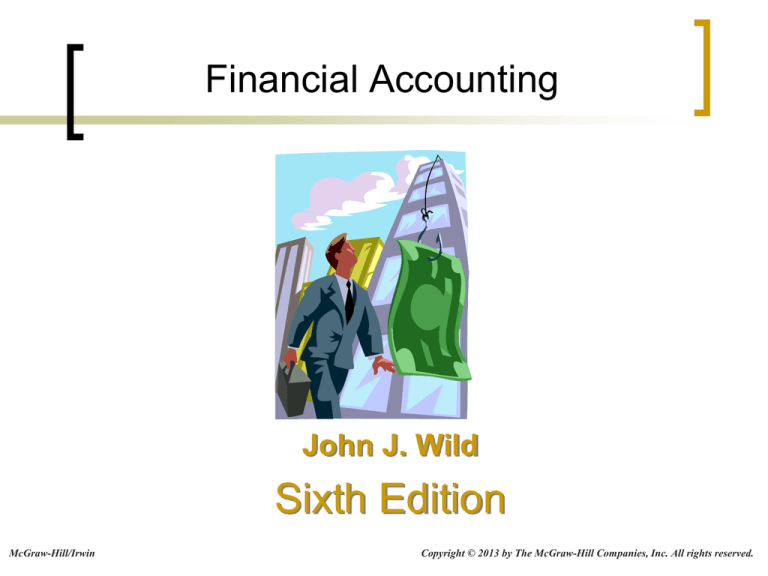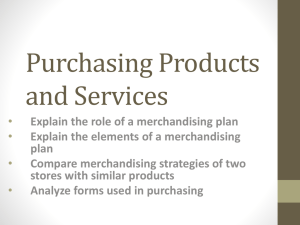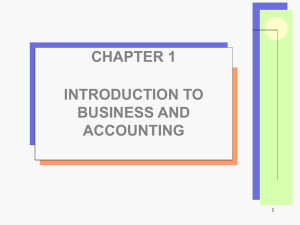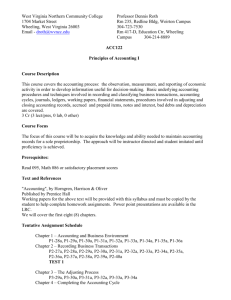
Financial Accounting
John J. Wild
Sixth Edition
McGraw-Hill/Irwin
Copyright © 2013 by The McGraw-Hill Companies, Inc. All rights reserved.
Chapter 04
Reporting and Analyzing
Merchandising Operations
Conceptual Learning Objectives
C1: Describe merchandising activities and
identify income components for a
merchandising company.
C2: Identify and explain the inventory asset
and cost flows of a merchandising
company.
4-3
Analytical Learning Objectives
A1: Compute the acid-test ratio and
explain its use to assess liquidity.
A2: Compute the gross margin ratio and
explain its use to assess profitability.
4-4
Procedural Learning Objectives
P1: Analyze and record transactions for
merchandise purchases using a perpetual
system.
P2: Analyze and record transactions for
merchandise sales using a perpetual system.
P3: Prepare adjustments and close accounts for
a merchandising company.
P4: Define and prepare multiple-step and
single-step income statements.
P5: Appendix 4A – Record and compare
merchandising transactions using both
periodic and perpetual inventory systems
(see text for details).
4-5
C1
Merchandising Activities
Merchandising Companies
Manufacturer
Wholesaler
Retailer
Customer
4-6
Reporting Income for
a Merchandiser
C1
Merchandising companies sell products to earn revenue.
Examples: sporting goods, clothing, and auto parts stores
Net
sales
Minus
Cost of Equals
goods sold
Gross
profit
Minus
Expenses
Equals
Net
income
Merchandising Company
Income Statement
For Year Ended December 31, 2011
Net sales
Cost of goods sold
Gross profit
Operating expenses
Net income
$ 150,000
80,000
$
70,000
46,500
$
23,500
4-7
C2
Operating Cycle for a
Merchandiser
Begins with the purchase of merchandise and ends with
the collection of cash from the sale of merchandise.
Credit Sale
Cash Sale
Purchases
Cash
collection
Purchases
Merchandise
inventory
Accounts
receivable
Cash
sales
Merchandise
inventory
Credit sales
4-8
C3
Inventory Systems
Beginning
inventory
+
Net
purchases
= Merchandise
available for sale
Ending inventory
+
Cost of goods
sold
4-9
P4
Multiple-Step Income Statement
Barton Company
Income Statement
For Year Ended December 31, 2011
Sales
Less: Sales discounts
Sales returns
Net sales
Cost of goods sold
Gross profit
Operating expenses:
Selling expenses:
Salaries expense
$ 29,600
Advertising expense
13,300
General and administrative expenses:
Adm. salaries expense
$ 18,200
Insurance expense
1,200
Rent expense
8,100
Supplies expense
1,000
Total operating expenses
Net income
$ 323,800
$
$
4,300
2,000
6,300
$ 317,500
233,200
$ 84,300
42,900
28,500
71,400
$ 12,900
4-10
End of Chapter 04
4-11








